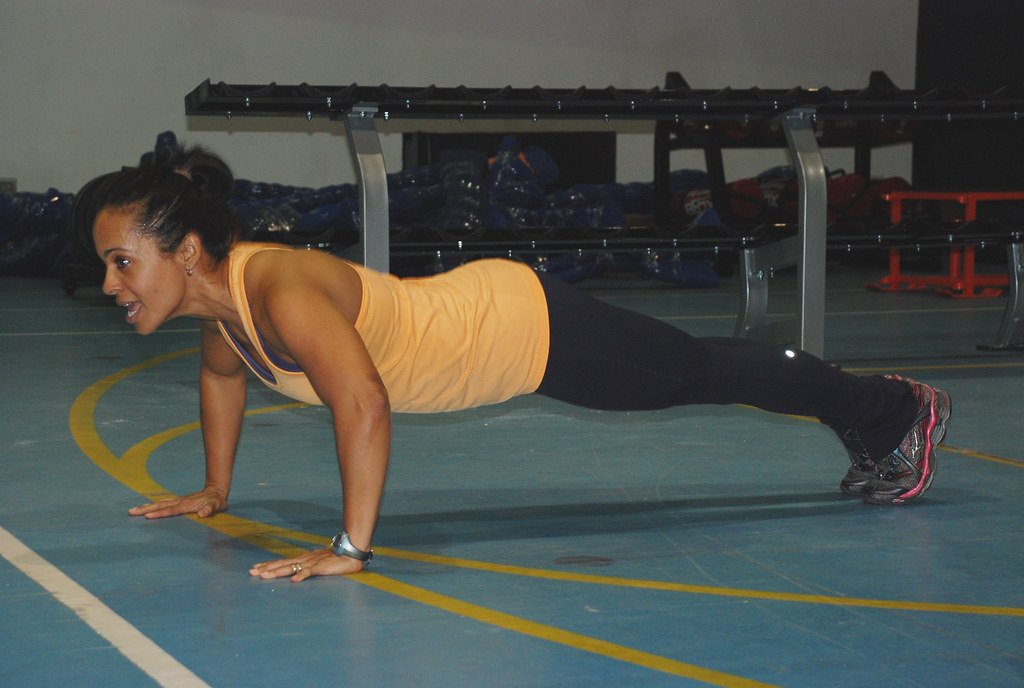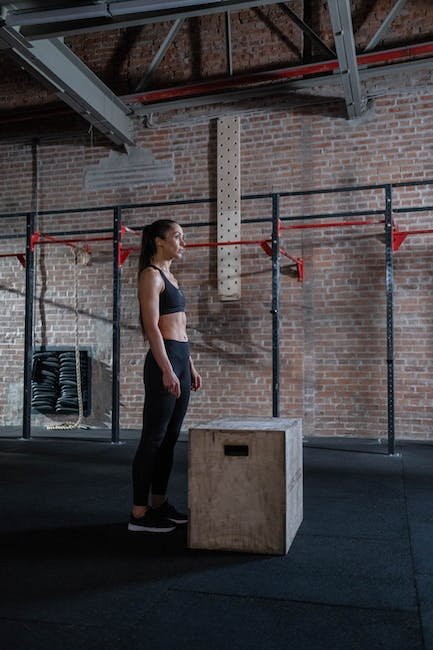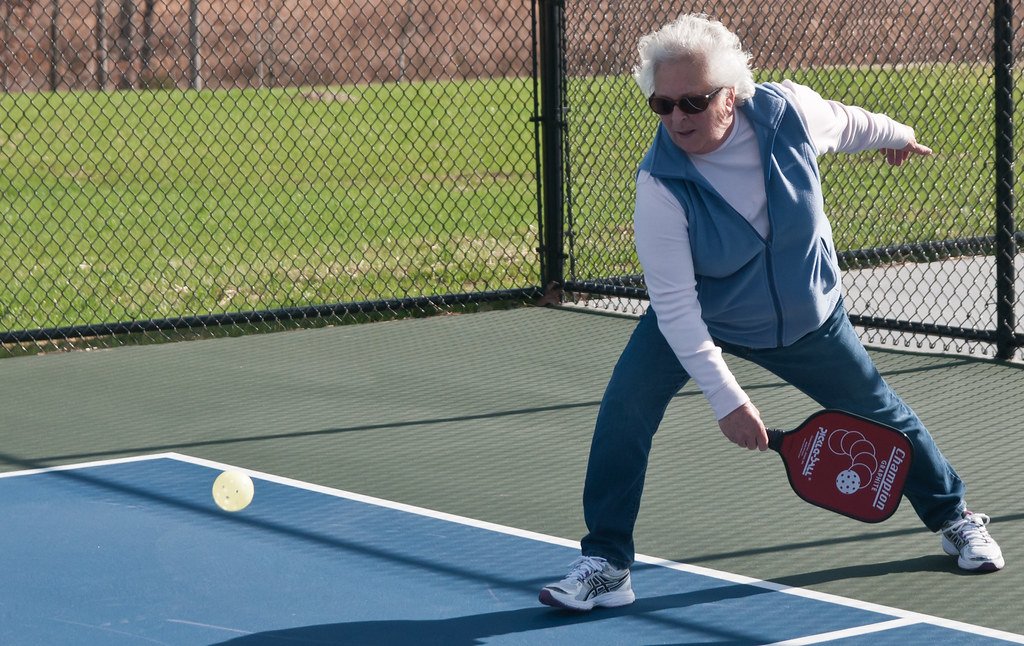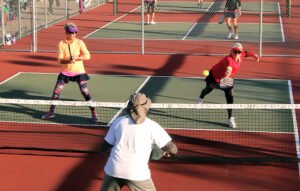What if I told you there was a way to elevate your pickleball game to new heights? Picture this: you gracefully move across the court, reacting with lightning-fast speed, and delivering powerful smashes that leave your opponents in awe. Welcome to the world of plyometric exercises – the secret weapon behind explosive pickleball moves. Whether you’re an avid player looking to raise your game or a beginner hoping to make a grand entrance, prepare to unlock a whole new level of agility, strength, and power. So, tighten your grip on your paddle and get ready to unleash the full potential of your pickleball prowess.
Table of Contents
- Explosive Power: Unleashing the Potential of Plyometric Exercises
- Boosting Agility and Quickness with Plyometrics
- Fine-tuning Your Pickleball Game: Plyometric Drills for Improved Performance
- Mastering the Art of Explosive Movement in Pickleball
- Enhancing Jumping Abilities and Reaction Times: Plyometric Training Tips for Pickleball Players
- Q&A
- In Retrospect

Explosive Power: Unleashing the Potential of Plyometric Exercises
When it comes to developing explosive power, plyometric exercises are the way to go. This dynamic training method focuses on maximizing muscular performance through a combination of stretching and contracting muscles rapidly, resulting in rapid force production. These exercises are not only physically demanding but also mentally exhilarating, pushing your limits to unleash your full athletic potential.
So, how can you incorporate plyometric exercises into your training routine? Here are a few key tips to get started:
- Variety is the key: Plyometric exercises encompass a wide range of movements, from jumps and hops to bounds and throws. By incorporating a variety of exercises, you engage different muscle groups and enhance your overall explosiveness.
- Progression is crucial: Start with low-intensity plyometric exercises and gradually build up to more challenging ones. This allows your muscles and connective tissues to adapt, reducing the risk of injury while maximizing your gains in power and strength.
- Form matters: Performing plyometric exercises with proper technique is essential for both efficiency and safety. Take the time to learn the correct form for each exercise and focus on maintaining good posture and alignment throughout.
- Pair it with resistance training: Combining plyometrics with traditional resistance training can further enhance your explosive power. By incorporating exercises like squats, deadlifts, and lunges, you develop the necessary strength foundation to propel yourself even further during plyometric movements.
By unleashing the potential of plyometric exercises, you’ll take your athletic performance to new heights. Just remember to consult with a trainer or coach to ensure proper technique and progression throughout your training journey. Are you ready to harness the explosive power within you?

Boosting Agility and Quickness with Plyometrics
Plyometrics, also known as jump training, is a highly effective method to enhance agility and quickness. Whether you are an athlete aiming to improve your performance or someone looking to increase your overall fitness level, incorporating plyometric exercises into your routine can yield incredible results.
To get started, it’s essential to understand the principles behind plyometrics. This training technique involves explosive movements that engage your muscles in a stretch-shortening cycle, rapidly stretching them before contracting with maximum force. As a result, you develop muscle power and improve your ability to generate force quickly, leading to enhanced agility and quickness.
There are various plyometric exercises you can try, catering to different muscle groups and levels of difficulty. Consider incorporating exercises like squat jumps, box jumps, and power skips into your routine. These exercises target your lower body, enabling you to generate explosive power and increase your ability to change direction swiftly. Additionally, incorporating upper body exercises like clap push-ups and medicine ball throws will help improve your overall athleticism.
Remember, consistency is key when it comes to plyometric training. Start gradually and progressively increase the intensity and difficulty of your exercises as your strength and coordination improve. By incorporating plyometrics into your regular workouts, you’ll be well on your way to boosting your agility and quickness, unlocking your full potential in various physical activities. So lace up your trainers, embrace the challenge, and watch yourself soar to new heights!
Fine-tuning Your Pickleball Game: Plyometric Drills for Improved Performance
Ready to take your pickleball skills to the next level? Incorporating plyometric drills into your training routine can give you the edge you need on the court. Plyometric exercises focus on explosive movements that help enhance power, agility, and coordination – all essential attributes for a formidable pickleball player.
Here are some plyometric drills that can help fine-tune your pickleball game:
- Box Jumps: Find a sturdy box or platform and set it at a challenging height. Stand in front of the box with your feet shoulder-width apart. Squat down, then explode upward, driving your arms forward, and jump onto the box. Step down carefully and repeat for a specified number of reps. Box jumps build lower body strength and explosiveness, improving your ability to react quickly and leap for overhead shots.
- Agility Ladder Drills: Lay down an agility ladder flat on the ground. With quick feet, move through the ladder by stepping in each square or running through alternating squares with precision and speed. Agility ladder drills enhance footwork, balance, and coordination, allowing you to swiftly navigate the court and execute swift side-to-side movements during a pickleball match.
- Squat Jumps: Start with your feet hip-width apart, standing tall. Lower into a squat position, then explode upward as high as you can, using your arms to generate momentum. Land softly back into the squat and repeat. Squat jumps increase lower body power and explosiveness, helping you generate strong shots and quick movements required in pickleball.
Remember, as with any physical activity, it’s crucial to warm up properly before attempting plyometric drills. Consult with a fitness professional to ensure these exercises align with your fitness level and capabilities. Incorporate these dynamic plyometric drills into your training regimen, and watch your pickleball performance soar!
Mastering the Art of Explosive Movement in Pickleball
Pickleball, a sport that combines the best elements of tennis, badminton, and table tennis, requires players to exhibit explosive movement on the court. As pickleball continues to gain popularity, it becomes increasingly important for enthusiasts to enhance their agility, speed, and quickness. Take your pickleball game to the next level by mastering the art of explosive movement.
Here are some effective strategies to boost your on-court performance:
- Dynamic Warm-up: Before engaging in any intense physical activity, it is crucial to prepare your body. Start with a dynamic warm-up routine that includes exercises like high knees, butt kicks, and lateral lunges. This will increase blood flow to your muscles and promote flexibility, helping you move more explosively.
- Plyometric Training: Incorporate plyometric exercises into your training regimen to improve explosive power. Jump squats, box jumps, and lateral bounds are excellent options that target your lower body muscles, enhancing your ability to generate quick bursts of energy during a pickleball game.
- Agility Drills: Agility is key in pickleball, where quick reflexes and sudden directional changes are vital. Incorporate ladder drills, cone drills, and side-to-side shuffles into your training routine to hone your agility. Focus on quick feet and sharp movements to explode towards the ball and outmaneuver your opponents.
Remember, mastering explosive movement takes time and practice. Incorporate these strategies into your training routine consistently to see significant improvements in your pickleball performance. So gear up, lace up your shoes, and ignite the court with your explosive moves!
Enhancing Jumping Abilities and Reaction Times: Plyometric Training Tips for Pickleball Players
If you’re a pickleball player looking to take your game to the next level, incorporating plyometric training into your routine can greatly enhance your jumping abilities and reaction times on the court. Plyometric exercises involve quick, explosive movements that help improve power and agility, two essential factors in pickleball.
Here are some tips to help you get started with plyometric training:
- Variety is key: Engage in a variety of plyometric exercises to target different muscle groups and improve overall athleticism. Include exercises like box jumps, lateral bounds, and depth jumps to challenge your body in diverse ways.
- Start slow, progress gradually: Plyometric training can be intense, so it’s crucial to start at a level that matches your current fitness abilities. Gradually increase the intensity and complexity of the exercises over time to prevent injuries and keep improving.
- Focus on proper form: To maximize the benefits of plyometric training, always prioritize proper form and technique. Maintain correct posture, land softly, and ensure your movements are explosive and controlled. Quality repetitions are more important than quantity!
- Rest and recover: Adequate rest is essential when incorporating plyometric exercises into your training routine. Allow your body to recover between sessions to prevent overtraining and reduce the risk of injury. Remember, rest is just as important as the workouts themselves.
- Combine with strength training: Plyometric exercises work best when complemented by strength training. Incorporate exercises like squats, lunges, and calf raises to build the necessary foundation for explosive movements.
By incorporating plyometric training into your pickleball routine, you’ll not only improve your jumping abilities and reaction times but also enhance your overall performance on the court. Stay consistent, listen to your body, and watch yourself soar to new heights!
Q&A
What are plyometric exercises?
Plyometric exercises are high-intensity movements that involve rapid stretching and contracting of muscles, aiming to improve power, speed, and explosive strength.
How can plyometric exercises benefit pickleball players?
Plyometric exercises help pickleball players enhance their explosive movements, agility, and overall on-court performance. They improve the ability to generate power quickly, resulting in faster reactions and stronger shots.
Which plyometric exercises are specifically beneficial for pickleball players?
Exercises like squat jumps, lateral box jumps, and split lunges can effectively improve lower body strength, dynamic movements, and quick lateral transitions – essential for the fast-paced nature of pickleball.
How can plyometric exercises improve my agility?
Plyometric exercises challenge and improve your fast-twitch muscle fibers, which are responsible for quick bursts of movement. This, in turn, enhances your agility, allowing you to swiftly change direction, accelerate, and decelerate on the pickleball court.
Is it important to have a proper warm-up before performing plyometric exercises?
Absolutely! A thorough warm-up routine is crucial before engaging in plyometric exercises. This reduces the risk of injury and prepares your muscles for the intense movements involved, allowing you to perform at your best.
Are plyometric exercises suitable for all ages and fitness levels?
While plyometric exercises can be modified for different fitness levels, it’s important to consult with a fitness professional or coach to ensure they are appropriate for your individual needs and capabilities.
Can plyometric exercises help to prevent injuries in pickleball?
Yes, plyometric exercises can aid in injury prevention by strengthening the muscles, ligaments, and tendons used during pickleball movements. Improved balance and muscle control can help reduce the risk of ACL tears, ankle sprains, and other common pickleball injuries.
How often should plyometric exercises be incorporated into a pickleball player’s training routine?
To avoid overtraining and promote muscle recovery, it’s recommended to incorporate plyometric exercises into your training routine 2-3 times per week. Always allow for at least one day of rest between plyometric sessions.
Can plyometric exercises alone make a significant impact on pickleball performance?
While plyometric exercises are highly beneficial, they should be combined with a well-rounded training program which includes cardio, strength training, and pickleball-specific drills to maximize performance gains on the pickleball court.
Are there any precautions that should be taken when performing plyometric exercises?
Yes, it’s essential to maintain proper form throughout each exercise to prevent injury and ensure maximum effectiveness. Start with lower-intensity variations and gradually increase difficulty to avoid straining muscles or joints.
In Retrospect
As we conclude our exploration of plyometric exercises for explosive pickleball moves, it is evident that embracing these dynamic training techniques can truly elevate your game on the court. From the electrifying jumps to the lightning-fast footwork, plyometrics not only improve your strength and power, but also refine your agility and coordination.
Now armed with a plethora of knowledge and a range of exercises tailored to pickleball, you are equipped to take your game to breathtaking heights. Remember, mastering the art of explosive movements requires patience, dedication, and practice. Start slow, listen to your body, and gradually challenge yourself as you progress.
So, as you lace up your court shoes and prepare to make those explosive pickleball moves, let the sheer joy of the sport ignite your passion. Visualize the court as your playground, where each jump and every quick step propels you towards victory.
With these plyometric exercises as your secret weapon, you will have the power to harness your energy, launch off the ground, and propel yourself towards the pinnacle of pickleball prowess. Unleash your lightning speed, dominate the court, and leave your opponents in awe of your explosive skills.
Remember, the key to success lies not only in the strength of your swing, but also in the agility of your feet. Plyometrics will unlock the hidden potential within you, fueling your ambition to reach new heights and conquer the court with unparalleled finesse.
So, whether you are a novice seeking an extra edge or a seasoned player seeking to enhance your performance, these plyometric exercises provide a gateway to explosive pickleball moves. Embrace the journey, embrace the power, and let the magic of plyometrics transform your approach to this thrilling sport.
The court awaits, the pickleball awaits, and the opportunity to showcase your explosive moves awaits. Now, it’s time to unleash your true potential and let the world witness your electrifying pickleball performance.
As an affiliate, my content may feature links to products I personally use and recommend. By taking action, like subscribing or making a purchase, you’ll be supporting my work and fueling my taco cravings at the same time. Win-win, right?
Want to read more? Check out our Affiliate Disclosure page.




